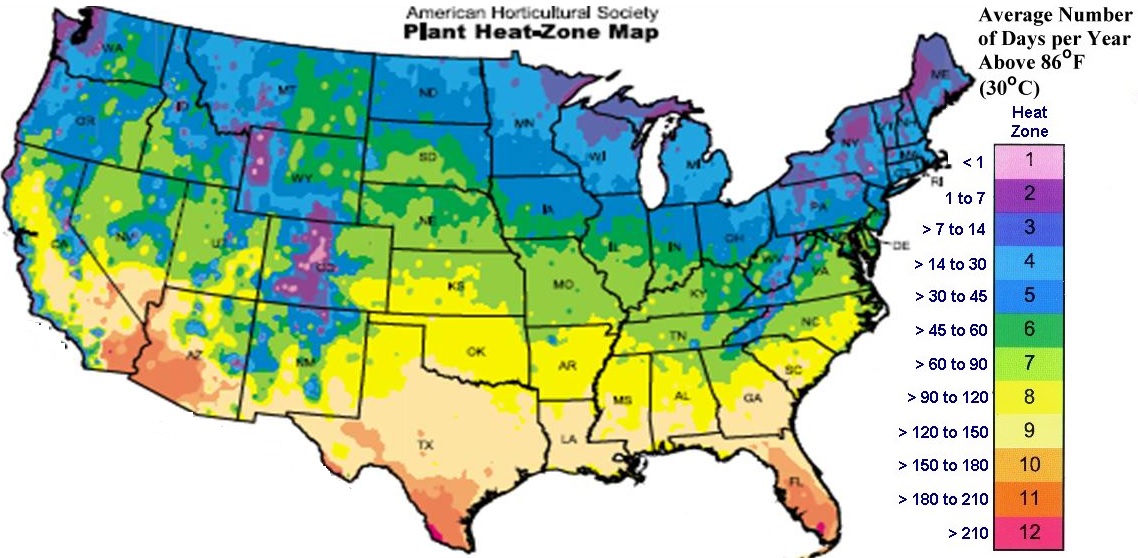Some like it hot. Some do not. Successfully choosing plants to suit your growing conditions is more than just looking up your zone number, and then matching it to the plant descriptions.
The USDA’s Plant Hardiness Zone Map will tell you the lowest temperature that strikes your region in an average winter. By using this information, you can determine what plants should "winter over" in your garden and survive for many years. However, frosty conditions are not only factor determining whether plants survive and thrive. Particularly during seasons of drought, we are all aware of the impact that heat has on our plants. Heat damage is more subtle and may first emerge as withering flower buds; leaves might droop or appear white or brown as pigments(chlorophyll) disappears; plant conditions could become inviting to insects; or roots may even cease to grow. Plant death from heat can be slow and lingering, perhaps for several years.
But there are a few weather related numbers that will help you plant for success:
How hot
it gets, and for how long. That is crucial information, because some plants
need all the heat they can get for as long as they can get it. Others turn into
pest and disease magnets when the temperature climbs much above 86F – or stop
producing flowers. The Heat Zone map is based on the average number of days in
a year with temperatures above 86F. This
map is tools to help you better determine which plants will do well in your
climate. The most comprehensive source for heat codes and cold-hardiness zone is
the American Horticultural Society’s “A-Z Encyclopedia of Garden Plants”, which
includes hardiness and heat codes for more than 8,000 plants.
The length of your growing season. It begins with the last frost in the spring and ends with the first frost in the fall. Those dates tell you a lot more than when to plant or prepare to protect your plants. Your allotment of frost free days determines whether flowers will have time to bloom in your climate. Often the answer is a clear cut yes or no. At other times, it’s a maybe. You may or may not decide to gamble with marginal plants, but beware: chances are you’ll have to do a lot of coddling – and still risk failure – during the growing season.






There are other factors that can cause stress to plants and skew the heat-zone rating. Some of them are more controllable than others.
- Oxygen
- Light
- Day length
- Air movement
- Surrounding structures
- Soil pH
- Nutrients
